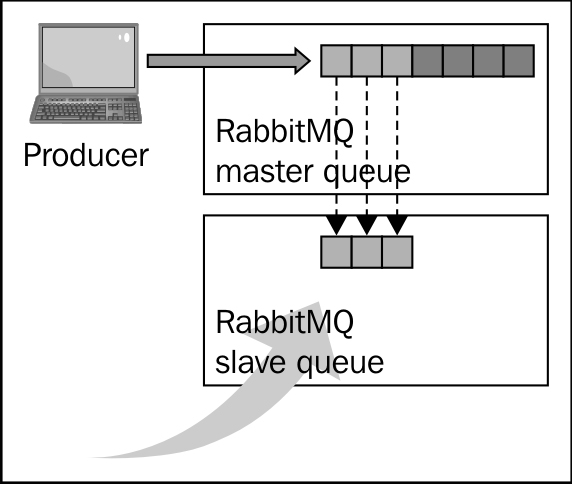-
Book Overview & Buying

-
Table Of Contents

RabbitMQ Cookbook

RabbitMQ Cookbook
Overview of this book
 Free Chapter
Free Chapter
 Sign In
Start Free Trial
Sign In
Start Free Trial

 Free Chapter
Free Chapter
As we have seen in the Mirroring queues recipe, when a mirror is configured, the messages are copied across the cluster.
However, a new node can be added to the cluster at any time and can start to host mirrored queues that already contain messages. How does the cluster behave with respect to the stored messages?
Let's suppose that we have a typical scenario with a standalone node that has some messages stored in one of its queues as follows:

Now, if we add a node to the cluster and properly configure the ha-policies, the queue of the first node gets mirrored and subsequent messages start to get replicated on the newly added node, seen as follows:

It's very important to note that messages that are already in the master queue at the time of the addition of the second node don't get replicated by default. If the master dies at this time, these messages are lost. However, in a typical case with "live" queues, as soon as the consumer drains the single copy messages, the configuration...

Change the font size
Change margin width
Change background colour